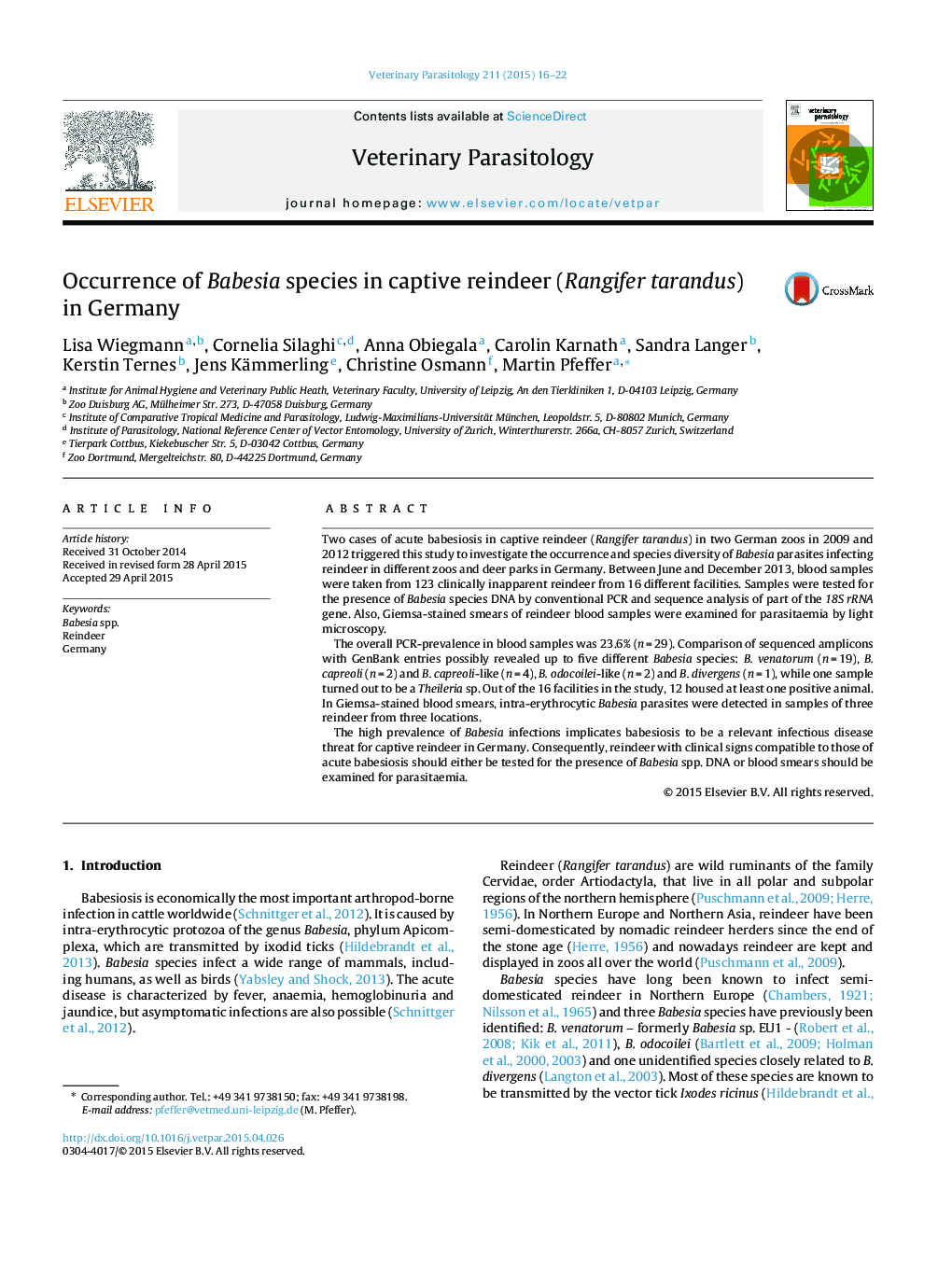| Article ID | Journal | Published Year | Pages | File Type |
|---|---|---|---|---|
| 5802488 | Veterinary Parasitology | 2015 | 7 Pages |
â¢The first nationwide survey for Babesia sp. in captive reindeer (Rangifer tarandus) in Germany was performed.â¢Blood samples of about half of the reindeer population in 2013 (n = 123) were tested.â¢An overall prevalence of 23.6% (n = 29) was determined by PCR.â¢Species identified were: B. venatorum, B. capreoli, B. odocoilei-like, B. divergens.â¢Subclinical infections with Babesia sp. are common among captive reindeer in Germany.
Two cases of acute babesiosis in captive reindeer (Rangifer tarandus) in two German zoos in 2009 and 2012 triggered this study to investigate the occurrence and species diversity of Babesia parasites infecting reindeer in different zoos and deer parks in Germany. Between June and December 2013, blood samples were taken from 123 clinically inapparent reindeer from 16 different facilities. Samples were tested for the presence of Babesia species DNA by conventional PCR and sequence analysis of part of the 18S rRNA gene. Also, Giemsa-stained smears of reindeer blood samples were examined for parasitaemia by light microscopy.The overall PCR-prevalence in blood samples was 23.6% (n = 29). Comparison of sequenced amplicons with GenBank entries possibly revealed up to five different Babesia species: B. venatorum (n = 19), B. capreoli (n = 2) and B. capreoli-like (n = 4), B. odocoilei-like (n = 2) and B. divergens (n = 1), while one sample turned out to be a Theileria sp. Out of the 16 facilities in the study, 12 housed at least one positive animal. In Giemsa-stained blood smears, intra-erythrocytic Babesia parasites were detected in samples of three reindeer from three locations.The high prevalence of Babesia infections implicates babesiosis to be a relevant infectious disease threat for captive reindeer in Germany. Consequently, reindeer with clinical signs compatible to those of acute babesiosis should either be tested for the presence of Babesia spp. DNA or blood smears should be examined for parasitaemia.
